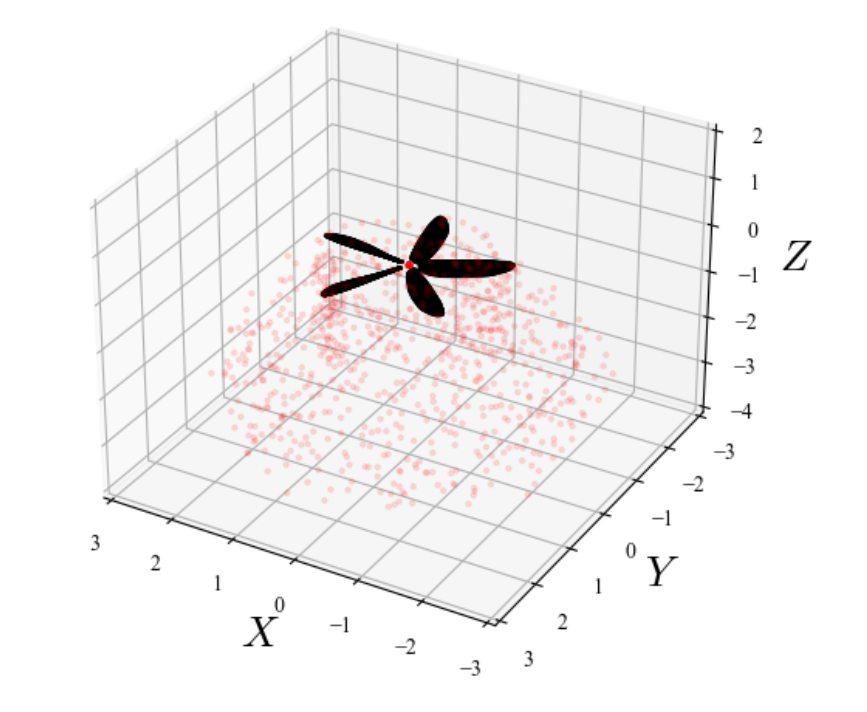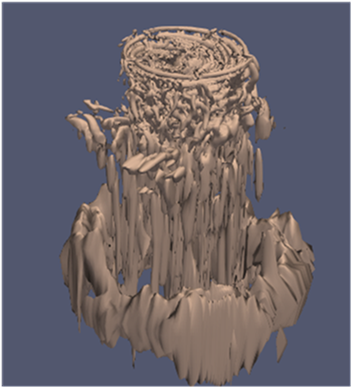Aanalysis of Rotorcraft Aerodynamics through Computational Fluid Dynamics
JAXA Supercomputer System Annual Report February 2021-January 2022
Report Number: R21ETET11
Subject Category: Skills Acquisition System
- Responsible Representative: Yoshikazu Makino, Aeronautical Technology Directorate, Silent Supersonic Aircraft Team
- Contact Information: Nagoya University, Graduate Department of Aerospace Engineering, Shigeru Sunada(shigeru.sunada@mae.nagoya-u.ac.jp)
- Members: Yasutada Tanabe, Hideaki Sugawara, Terukazu Tateno
Abstract
The tiltrotor configurations have been adopted as one of the aircraft configurations for urban air mobility. The rotor of the tiltrotor type aircraft, known as prop rotor, acts similarly to a helicopter rotor in hover and operates to generate propulsion as a propeller in forward flight. The prop rotor is required to have the hover performance as a rotor and the propulsive efficiency as a propeller at the same time. The two flight conditions and the aerodynamic environment around the rotor are significantly different. The aerodynamics of the prop rotor is investigated using an in-house code based on panel method developed at Nagoya University and rFlow3D, a CFD code for rotorcraft developed at JAXA.
Reference URL
N/A
Reasons and benefits of using JAXA Supercomputer System
A large number of computational resources is required to simulate many analysis cases.
Achievements of the Year
The aerodynamic performances of the rotor in hover and forward flight are investigated, assuming rotor specifications for urban air mobility through numerical simulations. The rotor performance is validated by the panel method (Fig. 1) and CFD analysis (Fig. 2). Both results showed generally reasonable agreement. Numerical simulations show that the pitch angle of the blade root is important as the design parameter to achieve high efficiency in both hover and forward flight performance.
Publications
N/A
Usage of JSS
Computational Information
- Process Parallelization Methods: N/A
- Thread Parallelization Methods: OpenMP
- Number of Processes: 1
- Elapsed Time per Case: 240 Hour(s)
JSS3 Resources Used
Fraction of Usage in Total Resources*1(%): 0.05
Details
Please refer to System Configuration of JSS3 for the system configuration and major specifications of JSS3.
| System Name | CPU Resources Used(Core x Hours) | Fraction of Usage*2(%) |
|---|---|---|
| TOKI-SORA | 38784.65 | 0.00 |
| TOKI-ST | 364902.51 | 0.45 |
| TOKI-GP | 0.00 | 0.00 |
| TOKI-XM | 0.00 | 0.00 |
| TOKI-LM | 0.00 | 0.00 |
| TOKI-TST | 864.02 | 0.02 |
| TOKI-TGP | 0.00 | 0.00 |
| TOKI-TLM | 0.00 | 0.00 |
| File System Name | Storage Assigned(GiB) | Fraction of Usage*2(%) |
|---|---|---|
| /home | 539.18 | 0.54 |
| /data and /data2 | 33814.51 | 0.36 |
| /ssd | 5520.99 | 1.43 |
| Archiver Name | Storage Used(TiB) | Fraction of Usage*2(%) |
|---|---|---|
| J-SPACE | 0.00 | 0.00 |
*1: Fraction of Usage in Total Resources: Weighted average of three resource types (Computing, File System, and Archiver).
*2: Fraction of Usage:Percentage of usage relative to each resource used in one year.
ISV Software Licenses Used
| ISV Software Licenses Used(Hours) | Fraction of Usage*2(%) | |
|---|---|---|
| ISV Software Licenses(Total) | 0.00 | 0.00 |
*2: Fraction of Usage:Percentage of usage relative to each resource used in one year.
JAXA Supercomputer System Annual Report February 2021-January 2022




